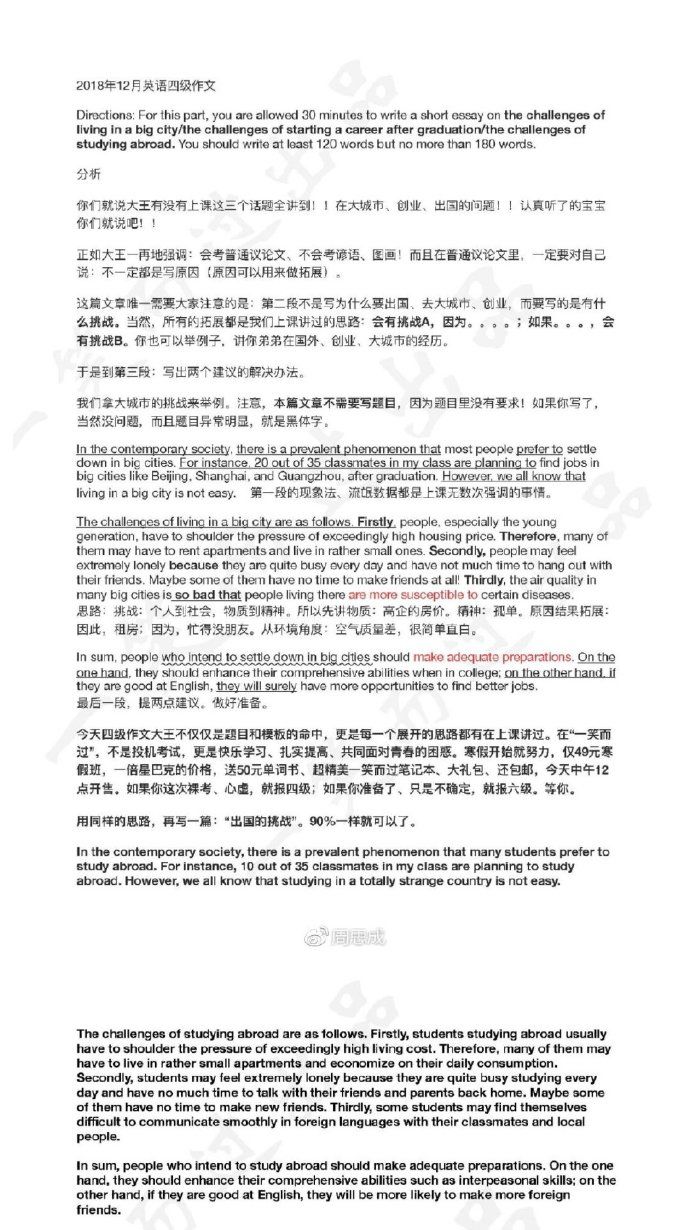LSAT考试全真试题四SECTION1(1)
|
SECTION 1 Time—35 minutes 27 Questions Directions: Each passage in this section is followed by a group of questions to be answered on the basis of what is stated for implied in the passage. For some of the questions, more than one of the choices could conceivably answer the question However you jare to choose the best answer. that is, the response that most accurately and completely answers the question. and blacken the corresponding space on your answer sheet. To many developers of technologies that affect public health or the environment. "risk communication" means persuading the public that the potential risks of such technologies are small and (5) should be ignored. Those who communicate risks in this way seem to believe that lay people do not understand the actual nature of technological risk. and they can cite studies asserting that. although people apparently ignore mundane hazards that pose (10) significant danger, they get upset about exotic hazards that pose little chance of death or injury. Because some risk communicators take this persuasive stance, many lay people see "risk communication" as a euphemism for brainwashing done by experts (15)Since however the goal of risk communication should be to enable people to make informed decisions about technological risks, a clear understanding about how the public perceives risk is needed. Lay people s definitions of "risk" are more likely to reflect (20) subjective ethical concerns than are experts definitions Lay people for example tend to perceive a small risk to children as more significant than a large risk to consenting adults who benefit from the risk-creating technology. However, if asked to rank hazards (25) by the number of annual fatalities, without reference to ethical judgments, lay people provide quite reasonalbe estimates, demonstrating that they have substantial knowledge about many risks. Although some studies claim to demonstrate that lay people have inappropriate (30) concerns about exotic hazards. these studies often use questionable methods, such as asking lay people to rank risks that are hard to compare, In contrast, a recent study showed that when lay people were given the necessary facts and time they understood the specific (35) risks of electromagnetic fields produced by high-voltage power transmission well enough to make informed decisions Risk communication should therefore be based on the principle that people process new information in (40) the context of their existing beliefs. If people know nothing about a topic they will find messages about that topic incomprehensible, If they have erroneous beliefs, they are likely to misconstrue the messages. Thus, communicators need to know the nature and (45) extent of recipients knowledge and beliefs in order to design messages that will not be dismissed or misinterpreted. This need was demonstrated in a research project concerning the public s level of knowledge about risks posed by the presence of radon (50) in the home. Researchers used open-ended interviews and questionnaires to determine what information should be included in their brochure on radon. Subjects who read the researchers brochure performed significantly better in understanding radon risks than significantly better in understanding radon risks than (55) did a control group who read a brochure that was written using a different approach by a government agency. Thus, careful preparation can help risk communicators to produce balanced material that tells people what they need to know to make decisions |








